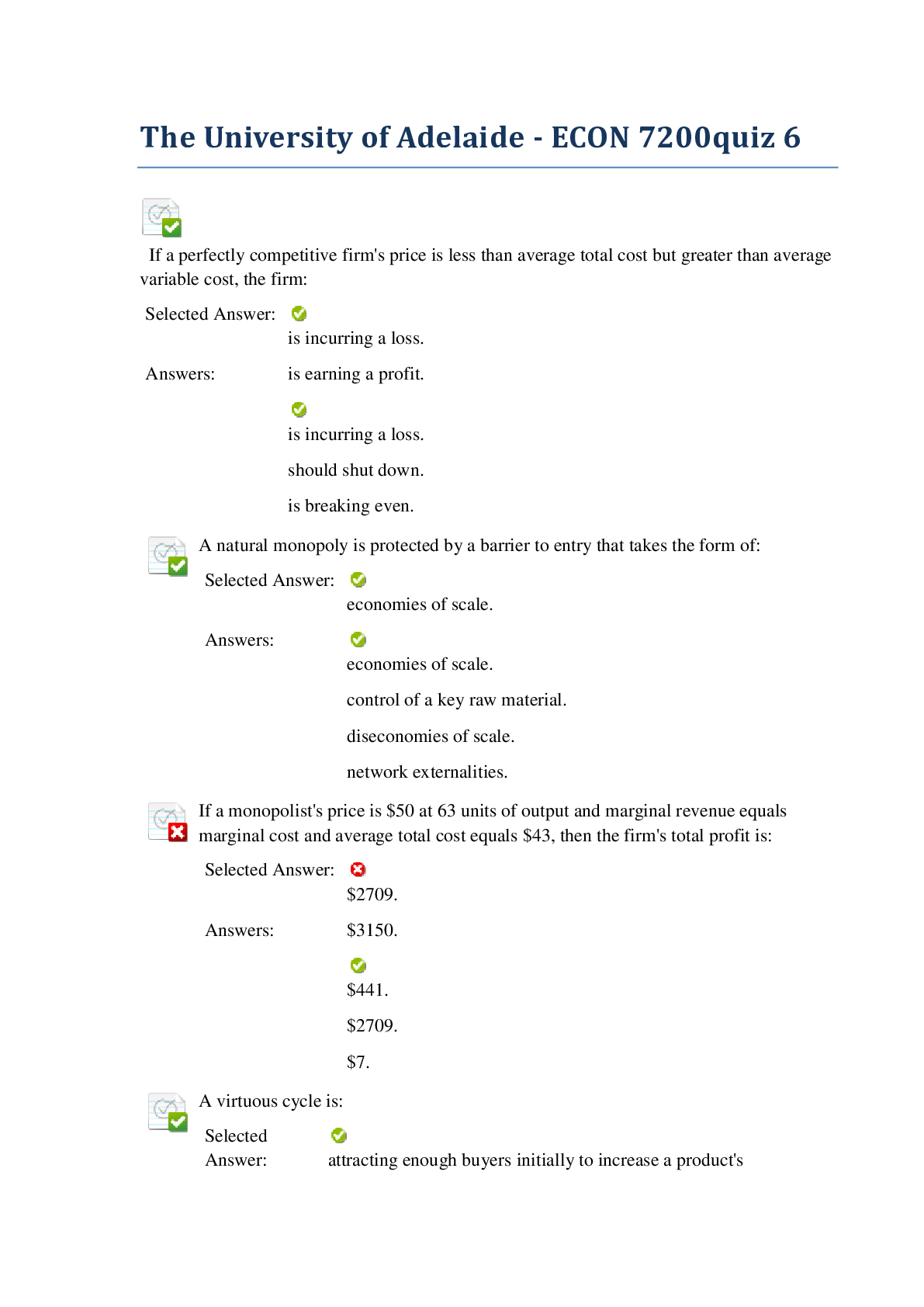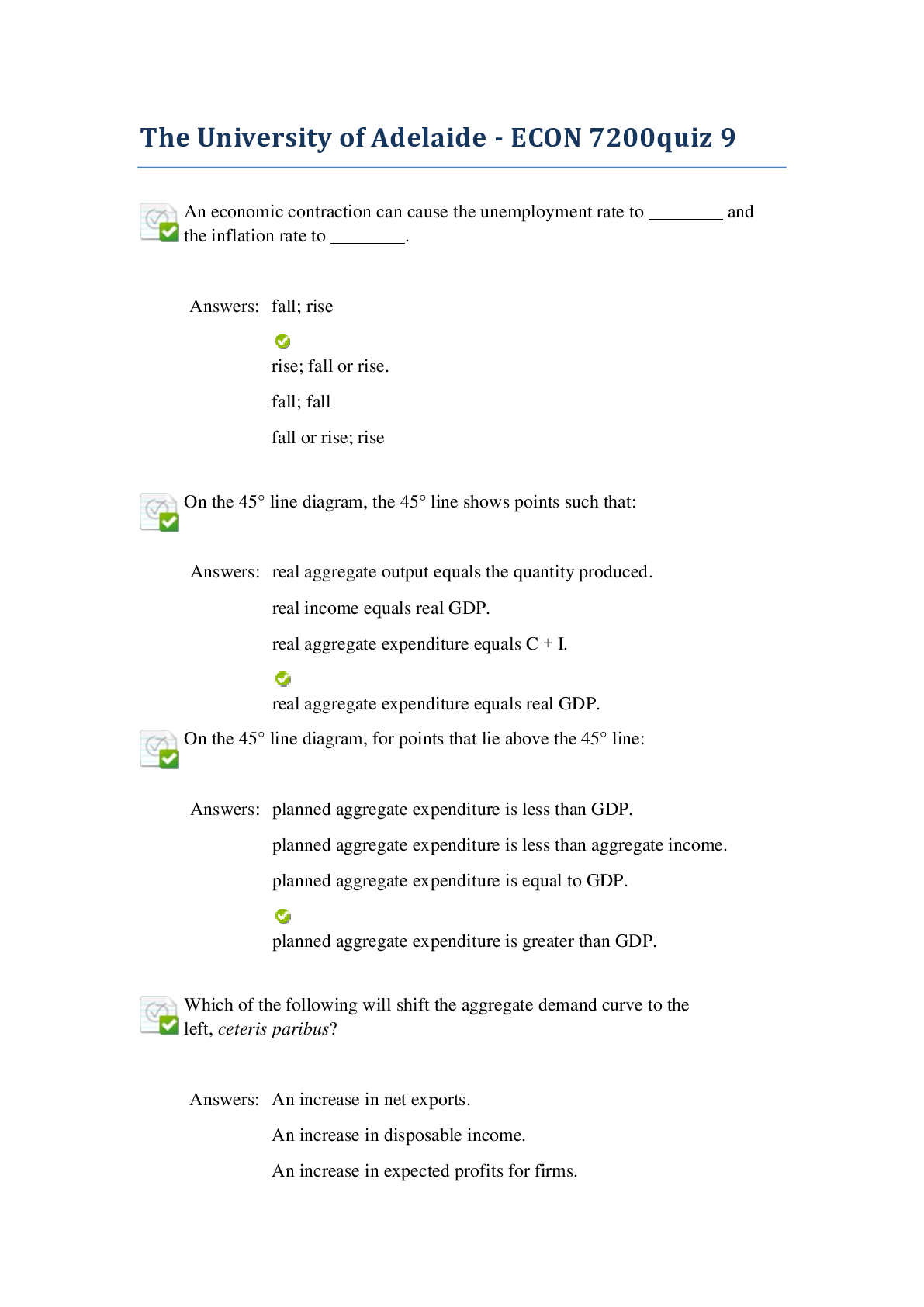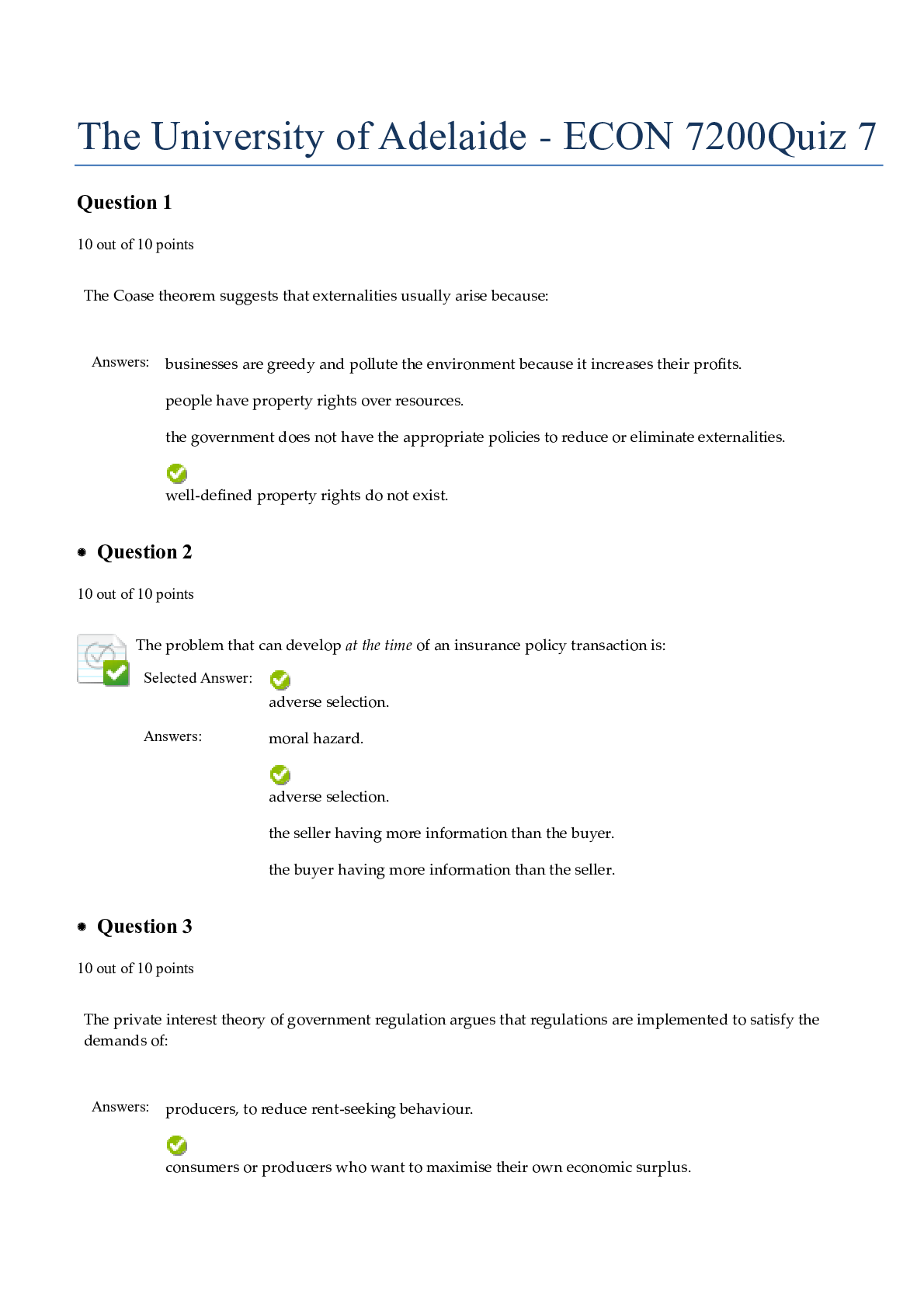Economics > QUESTIONS & ANSWERS > The University of Adelaide - ECON 7200quiz 11. Graded A (All)
The University of Adelaide - ECON 7200quiz 11. Graded A
Document Content and Description Below
Question 1 Question 2 If contractionary monetary policy is used, which of the following would be most likely to enhance the effect of the contractionary policy on aggregate demand? Questi... on 3 Refer to Table 16.1 for the following question. Table 16.1 Year Potential GDP Real GDP Price Level 2012 $1.4 trillion $1.4 trillion 150 2013 $1.5 trillion $1.42 trillion 152 Refer to Table 16.1. Consider the hypothetical information in the table for potential GDP, real GDP and the price level in 2012 and in 2013 if the Reserve Bank of Australia does not use monetary policy. If the Reserve Bank of Australia wants to keep real GDP at its potential level in 2013, it should: Question 4 In the model of the market for loanable funds, which of the following will not shift the supply curve for loanable funds? Question 6 In which of the following situations would the Reserve Bank of Australia conduct contractionary monetary policy? Question 7 Refer to Figure 16.3 for the following question(s). Figure 16.3 The market for loanable funds in equilibrium Refer to Figure 16.3. As a result of an increase in the government budget deficit, the ________ for loanable funds will ________, thereby ________ the equilibrium real interest rate and ________ the equilibrium quantity of loanable funds. Question 8 Under the current operation of monetary policy in Australia, the money supply is: Question 9 10 out of 10 points If expansionary monetary policy is used, then which of the following would be most likely to enhance the effect of the expansionary policy on aggregate demand? Question 10 Which of the following does not function as an automatic stabiliser? Question 1 Refer to Table 16.2 for the following question(s). Table 16.2 Year Potential GDP Real GDP Price Level 2012 $1.4 trillion $1.4 trillion 150 2013 $1.5 trillion $1.8 trillion 154 Consider the hypothetical information in Table 16.2 for potential GDP, real GDP and the price level in 2012 and in 2013 if the Reserve Bank of Australia (RBA) does not use monetary policy. If the RBA wants to keep real GDP at its potential level in 2013, it should: Question 2 Refer to the Figure 16.6 for the following question. Figure 16.6 Refer to Figure 16.6. In this figure, suppose the economy in Year 1 is at point A and expected in Year 2 to be at point B. Which of the following policies could the Reserve Bank of Australia use to move the economy to point C? Selected Answer: Sell financial securities. Answers: Decrease income taxes. Sell financial securities. Increase government spending. Buy financial securities. Question 3 Which of the following is an example of discretionary fiscal policy? Question 4 In which of the following situations would the Reserve Bank of Australia conduct contractionary monetary policy? Question 7 Active changes in tax and spending by government intended to smooth out the business cycle are called ________, and changes in taxes and spending that occur passively over the business cycle are called ________. Question 8 The Reserve Bank of Australia manages the supply of cash on a daily basis to: Question 9 If contractionary monetary policy is used, which of the following would be most likely to enhance the effect of the contractionary policy on aggregate demand? Question 10 Refer to Table 16.2 for the following question(s). Table 16.2 Consider the hypothetical information in Table 16.2 for potential GDP, real GDP and the price level in 2012 and in 2013 if the Reserve Bank of Australia does not use monetary policy. If the RBA uses monetary policy successfully to keep real GDP at its potential level in 2013, which of the following will be lower than if the RBA had taken no action? Question 1 If the Reserve Bank of Australia buys bonds and securities in the open market, this is likely to lead to a: Question 2 The money demand curve is downward sloping because: Question 3 Refer to Figure 16.3 for the following question(s). Figure 16.3 The market for loanable funds in equilibrium Refer to Figure 16.3. Beginning at equilibrium, if the government budget deficit rises, which of the following would you expect to see? Question 4 Which of the following is an automatic stabiliser? Question 6 If the Reserve Bank of Australia sells bonds and securities in the open market, this is likely to lead to a: Question 7 An 'automatic stabiliser' is: Question 10 The largest share of Australian federal government welfare payments in 2012/13 went to: Question 1 Which of the below is an argument that supports the non-independence of a country's central bank from its government? Question 3 Not all households are net borrowers. For households that are net lenders, an increase in interest rates will: Question 6 A rise in domestic interest rates relative to interest rates in other countries may lead to an exchange rate: Question 8 Discretionary fiscal policy is when: Question 9 The effect of monetary policy on long-term interest rates is usually: Question 8 Refer to Figure 16.4 for the following question. Figure 16.4 Refer to Figure 16.4. In this figure, suppose the economy in Year 1 is at point A and expected in Year 2 to be at point B. Which of the following policies could the Reserve Bank of Australia use to move the economy to point C? [Show More]
Last updated: 2 years ago
Preview 1 out of 11 pages

Buy this document to get the full access instantly
Instant Download Access after purchase
Buy NowInstant download
We Accept:

Reviews( 0 )
$9.00
Can't find what you want? Try our AI powered Search
Document information
Connected school, study & course
About the document
Uploaded On
May 16, 2020
Number of pages
11
Written in
Additional information
This document has been written for:
Uploaded
May 16, 2020
Downloads
0
Views
137


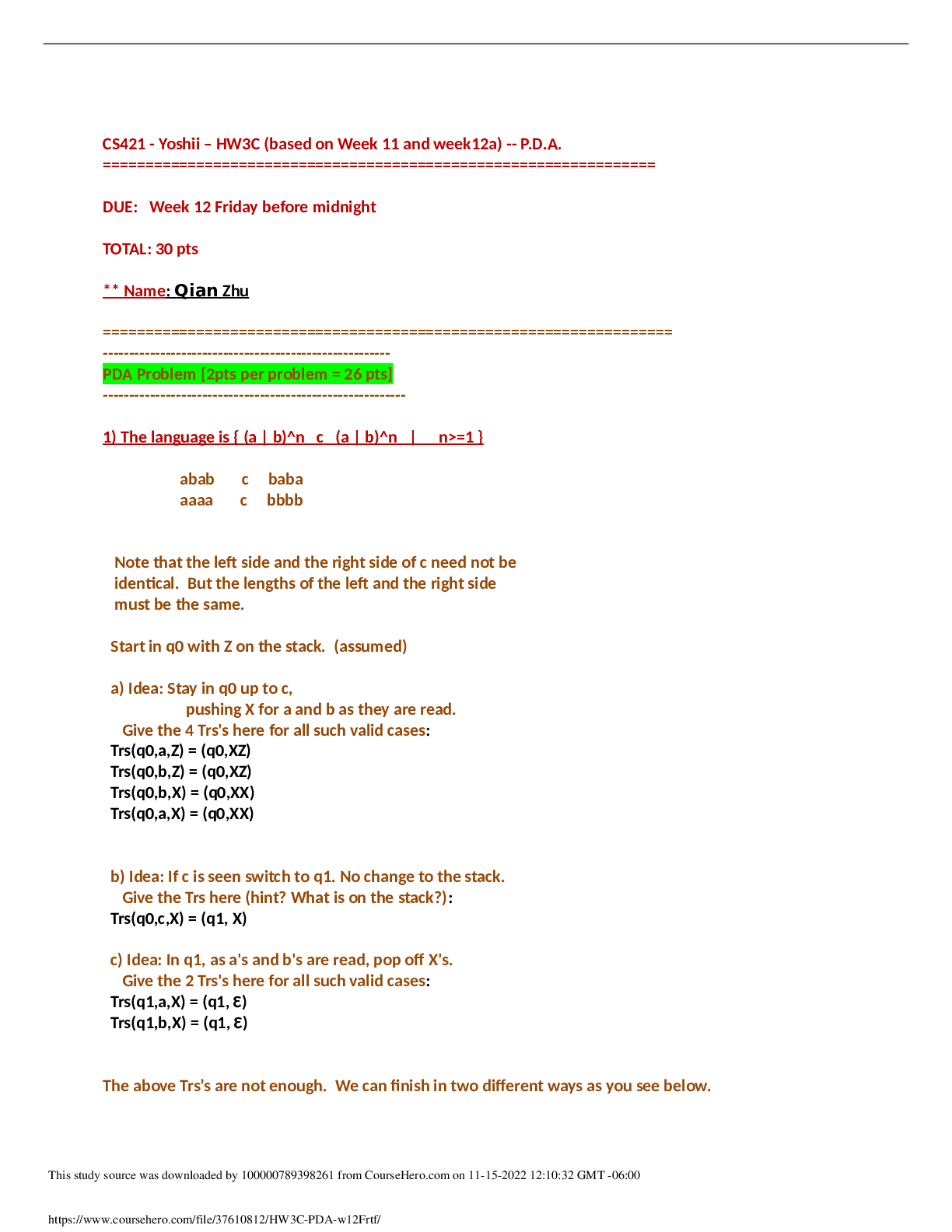


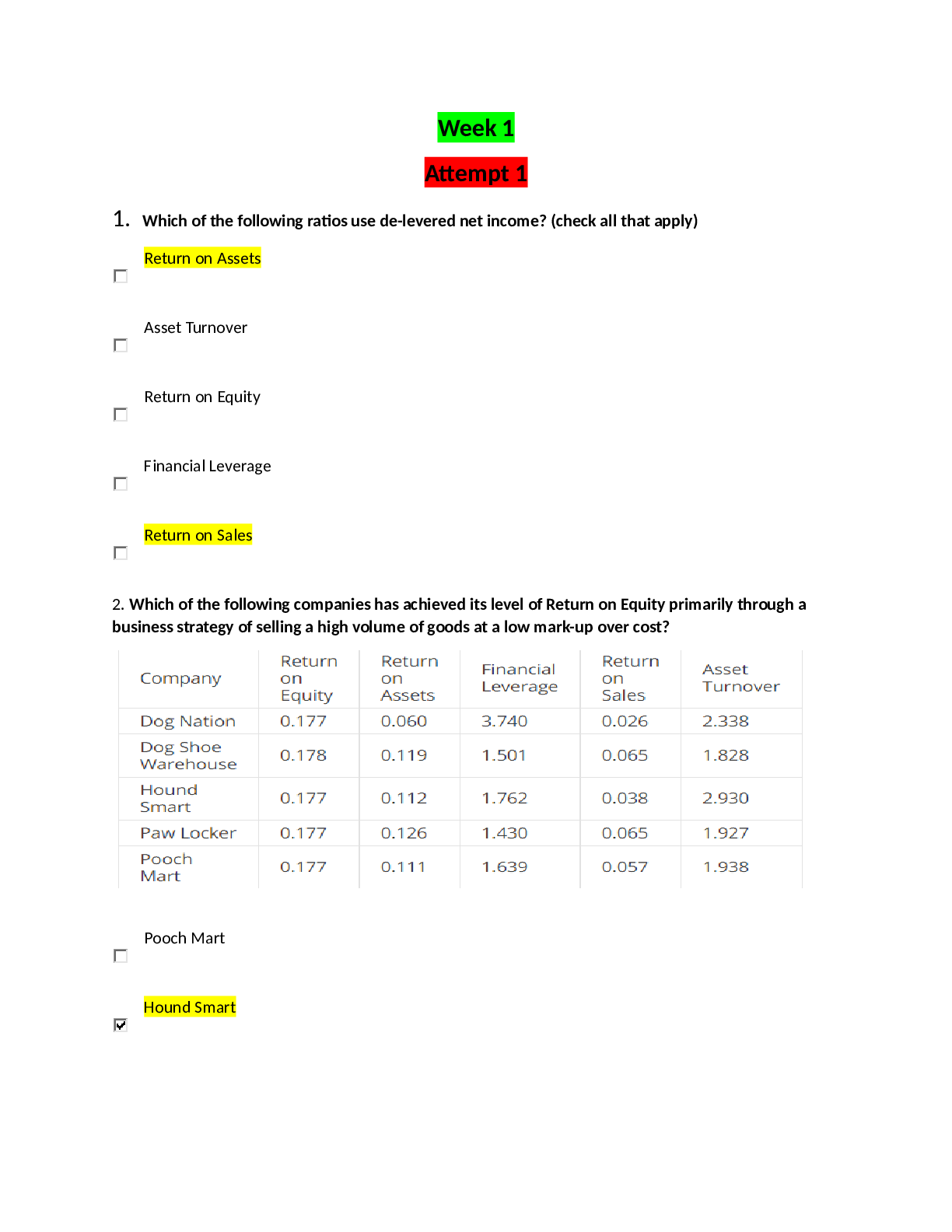
.png)
.png)
.png)
.png)
.png)
.png)
.png)
